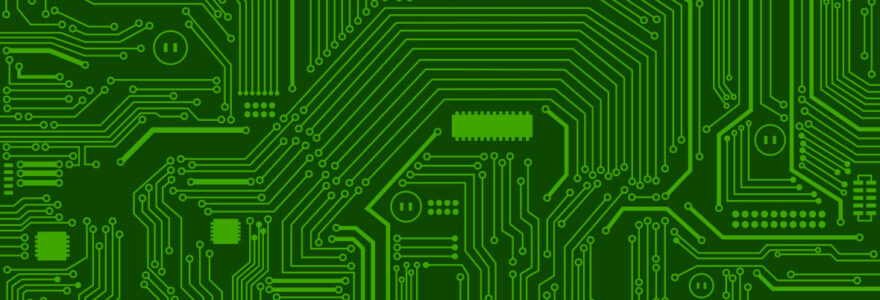High Density Interconnect (HDI) printed circuit boards (PCBs) play a key role in the development and advancement of wearable technology. These tiny, yet powerful, components are essential for the seamless integration of various features and functionalities in wearable devices. HDI PCBs enable the miniaturization of wearable devices, allowing for sleek and compact designs that can be comfortably worn on the body.
Technological Innovations Facilitated by HDI PCBs in IoT Devices
In the realm of Internet of Things (IoT) devices, HDI PCBs are instrumental in driving technological innovations. These advanced circuit boards enhance device communication, contribute to energy efficiency, and enable functionality improvements in IoT devices.
Role of HDI PCBs in Enhancing Device Communication
HDI PCBs enable the seamless transmission of data between IoT devices. With their dense layout and high-speed signal transmission capabilities, these circuit boards facilitate the exchange of information, enabling devices to communicate effectively. This enhanced communication paves the way for the seamless connectivity and interoperability of IoT devices. More on this link.
Contribution of HDI PCBs to Energy Efficiency in IoT Devices
HDI PCBs also play a crucial role in improving the energy efficiency of IoT devices. These circuit boards reduce power consumption by optimizing signal routing and minimizing power losses. With the ability to support multiple layers and intricate designs, HDI PCBs enable efficient power management, extending the battery life of wearable and IoT devices.
Functionality Improvements in IoT Devices through HDI PCBs
HDI PCBs enable the integration of complex functionalities in IoT devices. These circuit boards allow for the incorporation of sensors, actuators, and other components necessary for advanced features such as biometric monitoring, GPS tracking, and environmental sensing. HDI PCBs enable the seamless integration of these functionalities, providing users with enhanced capabilities and improved user experiences.
Overcoming Design and Manufacturing Obstacles with HDI PCBs
Design and manufacturing hurdles have historically posed challenges for the development of wearable and IoT devices. However, HDI PCBs have emerged as a solution to overcome these obstacles. The compact size and high-density nature of HDI PCBs enable complex designs to be realized in a small form factor. Additionally, advancements in manufacturing processes have made it possible to produce these intricate circuit boards efficiently, ensuring faster time to market for wearable and IoT devices.
Cost-related Challenges in Using HDI PCBs
Despite their numerous advantages, the utilization of HDI PCBs in wearable and IoT devices can present cost-related challenges. The complex design and manufacturing processes involved in HDI PCB production often lead to higher production costs. However, the growing demand for these advanced circuit boards is driving economies of scale, making them more affordable and accessible in the market.
Ensuring Durability and Longevity of HDI PCBs in Wearables and IoT Devices
Wearable and IoT devices often face demanding environmental conditions, requiring circuit boards that are durable and long-lasting. HDI PCBs, with their multi-layer construction and robust materials, provide the necessary durability to withstand the rigors of everyday use. Additionally, advances in surface finishes and protective coatings contribute to the longevity of HDI PCBs, ensuring continued functionality and reliability of wearable and IoT devices.
Key Features that Make HDI PCBs Ideal for Wearables and IoT Devices
HDI PCBs possess several key features that make them the ideal choice for wearable and IoT devices:
- Compact size and high-density interconnections enable miniaturization and sleek designs
- High-speed signal transmission capabilities facilitate seamless device communication
- Power-efficient designs optimize energy consumption, extending battery life
- Integration of complex functionalities enhances device capabilities
- Durable construction and protective coatings ensure longevity
Challenges and Solutions in Implementing HDI PCBs in IoT and Wearables
Overcoming Design and Manufacturing Obstacles with HDI PCBs
Designing and manufacturing HDI PCBs for IoT and wearable devices can be complex and challenging. However, advancements in design software and manufacturing processes have made it easier to overcome these obstacles. Design software now offers advanced features that simplify the layout and routing of high-density circuit boards. Furthermore, manufacturers have developed specialized techniques, such as laser drilling and sequential build-up, to efficiently produce HDI PCBs with intricate designs.
Cost-related Challenges in Using HDI PCBs
While HDI PCBs offer significant benefits, the cost of implementing them in wearable and IoT devices can be a challenge. However, there are solutions to mitigate these costs. Collaborations between designers, engineers, and manufacturers can optimize the design and manufacturing processes, reducing production costs. Additionally, economies of scale and advancements in manufacturing technologies are steadily driving down the cost of HDI PCBs, making them more feasible for widespread adoption.
Ensuring Durability and Longevity of HDI PCBs in Wearables and IoT Devices
Ensuring the durability and longevity of HDI PCBs in wearable and IoT devices is crucial for their successful implementation. The use of robust materials and advanced surface finishes provides protection against environmental factors such as moisture, temperature variations, and mechanical stress. Thorough testing and quality control measures during the manufacturing process further ensure the reliability and longevity of HDI PCBs, contributing to the overall durability of wearable and IoT devices.
The future of IoT and wearable technology holds immense potential for the continued integration and advancement of HDI PCBs. As technology evolves, HDI PCBs will become even more compact, efficient, and affordable. The ongoing miniaturization trend will enable the development of wearable devices with increasingly sleek and unobtrusive designs. Moreover, the seamless integration of HDI PCBs will enable IoT devices to become more interconnected and intelligent, creating a world where devices seamlessly communicate and interact to enhance our daily lives.
